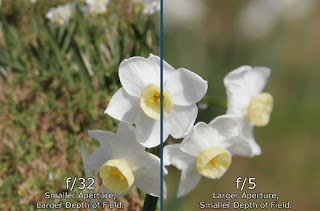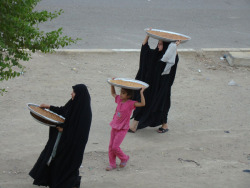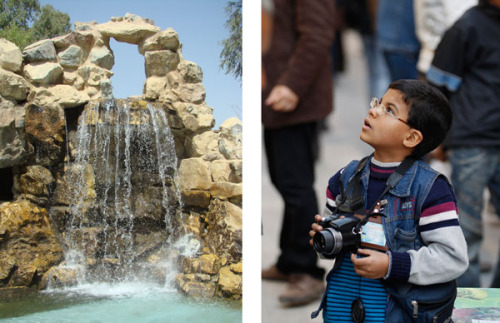Monday, January 30, 2012
Saturday, January 28, 2012
Momentum 2006, Photography Lessons
I just watched a short film put out by the National Film Board (NFB) about a paparazzi photographer (George) and his father who is a studio portrait photographer in the Portuguese community of Toronto. George said something really interesting about photography, no matter whom is taking the picture - that it's not about what you see, it's not about what you know, and it's not about who or what is in front of you; it's about what you feel and what's inside your heart.
You can rent the 12 min film at the public library - DVD 770 M ❤
Friday, January 27, 2012
After One Semester...and Three Classes...
Photography:
- Of relating to, or produced by light…as in photosynthesis
- Indicating a photographic process…photolithography
- from Greek phōtōs ~ light
If too much light enters the camera the photo will
be ‘overexposed,’ ‘too bright,’ or ‘blown out.’
If too little light enters the camera the photo
will be ‘underexposed,’ ‘too dark,’ or ‘black.’
With the right amount of light allowed into the camera, results in a photo that is ‘properly
exposed.’
·
How much light enters the camera depends on
two things:
o
The Aperture
o
The Shutter Speed
o …ISO
settings also affect the exposure…but that’s for another day
The
Aperture ~ From
Latin meaning ‘open’
The aperture is the circular mechanism inside your
camera that opens and closes when a picture is taken. You can set the aperture to open wide or to very tight when a
picture is taken…and all degrees in between.
The larger the aperture the more light will enter the camera.
The smaller the aperture the less light will enter the camera.
Your eyes’ pupils are apertures: the pupil gets wider in the dark, to let more light in, and narrower in the light, to lessen the amount of light entering.
The larger the aperture the more light will enter the camera.
The smaller the aperture the less light will enter the camera.
Your eyes’ pupils are apertures: the pupil gets wider in the dark, to let more light in, and narrower in the light, to lessen the amount of light entering.

The settings for the aperture openings (large or small) are called ‘F-stops.’ The confusing thing about the aperture is the larger the opening the smaller the f-stop number.
·
F22 (F-stop 22) translates into a very small
aperture opening and F2 means a very large aperture opening.
Which aperture you choose often depends on the
‘depth of field’ you want.
·
Depth of Field (DOF/dof) refers to how much
of the photo is in focus and how much is out of focus (blurry).
o
A very shallow dof would mean the subject
(the person, horse, building, flower you're photographing) is in focus, but the
background is very blurry.
- § Again, thinking in relation to your eyes’ pupils - when dilated or wide open it lets in a lot of light and becomes difficult to focus and when your pupils are narrow it becomes easier to focus.
o A
very large dof brings everything in the photo in equal focus…from the
foreground to the background.
Soooooo…
If you want a shallow dof (background blurry) you
choose a large aperture opening (ex. F2.8).
And…
If you want a large dof (everything in focus) you
choose a small aperture opeining (ex.f22).
Labels:
aperture,
black,
blown out,
dark,
depth of field,
f-stop,
light,
overexposed,
properly exposed,
shutter speed,
underexposed
Thursday, January 26, 2012
Iraq’s Youngest Photographer (via Reuters)
Qamar Hashim is an 8-year-old Iraqi photographer. He tours famous streets to picture Baghdadis with his single camera and is the youngest Iraqi photographer to win several local awards, according to the Iraqi Society Photographic (ISP).
Below, Qamar responds to a series of questions.
- When did you take your first photograph and what did it show?
I do not remember exactly the first picture but I had been mimicking my father since I was 4 or 5 years-old and started to take pictures of the Tigris river, the gulls, birds, old houses and heritage places.
- Why do you think photography is important?
Photography is very important. It documents life and pauses time. We can show the city, life and the people.
- What do you want to show people about Iraq?
I want to say through my pictures that Iraq is precious and Iraqis are very kind. Iraq is peaceful and has a great history.
- How do you feel about the U.S. troops leaving Iraq?
I am afraid of the U.S. soldiers, they destroyed the house my family rented in 2003, when I was a fetus. Thank God my family survived and I am happy now for their departure. I am free and not afraid of their tanks.
- What do you want to be when you finish school?
I like to act and I would like to be a child-activist.
- Which is your favorite photo you have taken and why?
My favorite picture is of a man sleeping who sells books at al-Mutanabi street. Also a picture of a bee on a rose, I ran a lot to follow the bee until I got this picture.
- Are there any photographers you look up to?
There a lot of good photographers and I learned from them (Adel Qassim, Fouad Shakir, Kareem al-Ba’aj, and Hameed Majeed).
- Are there any photos you wish to take but haven’t been able to yet?
The dangerous pictures like fire, blasts, other incidents but I have been sent off the site. They say I am a child. Also I wish to get a picture of the triangle of migrant birds.
- What does the future of Iraq look like?
I see a flourishing future for Iraq especially when my family owns a house. I love Iraq, my home, and it is more precious than anything else.
Wednesday, January 25, 2012
Goose Convention
~ Images from down in the coulees early in the morning...so windy but hilarious to hear all of the geese convening in the river valley ~
Monday, January 23, 2012
I'm SOOOOO Happy to see you!
This is Avalanche, or Avi for short.
Avi is the farm greeter...I think this an attempt to smile :)
Avi is the farm greeter...I think this an attempt to smile :)
I love her expression in this shot...
...all taken with my handy iPhone ❤
Sunday, January 22, 2012
Pictures in the Wind
This week's challenge is to create twelve 4x5 negatives using a large format camera. After a five hour demo from set up, to tear down and negative development I thought I was ready to head out to the hills and shoot some nature. Little did I know this assignment was to be riddled with hours of rookie mistakes and botched negatives...aaahhh, being a newbie is rough.
First off - dodging curious llamas.
Another challenge was setting up shop in the coulees while battling the wind. (Snaps to me for practicing set up and tear down in the comfort of my home).
5 ruined negative sheets (due to incorrect loading?)
+ a general lack of nature to capture
(to the power of not really having much of an idea of what I'm wanting to shoot)
= Defeated Rhianne :(
After a short sob session, and a $10 hot chocolate at Starbucks I headed to another friend's farm thinking I could get some fun images of her adorable crew of minis and donkeys. But instead of being subjects they thought they'd rather be photographers...or assistants? Or chewing my boots and tripod (don't tell Jarrett).
So, long story short; I resorted to using my Minolta 35 mm, and my Olympus SP-500. Oh well, better luck next time ❤
Saturday, January 21, 2012
Wednesday, January 18, 2012
Assignment #1 ~ Structure: Select one image that is structured well and one that is structured poorly, explain why.
In this first image there is a length of string randomly laying on asphalt, with bits of pine needles and leaves surrounding it. The contrast of the white string against the black asphalt help set off the subject. The string subject is centred in the frame, with a wide frame of asphalt surrounding it; seemingly making the subject important yet the visual interest is lost. In my opinion this image demonstrates poor structure as the subject is the main focus yet is lost, almost swimming in the background.
The second image displays the same subject of the white string on the black asphalt, filling and dominating more of the space. The subject functions as a clear centre of interest.
The third image shows the same subject of the white string on asphalt, with the subject filling so much of the frame and the cursive shapes of the strings make the image more visually compelling. By eliminating the understandable perspective of looking down on a piece of string on the ground the random shapes are emphasized, strengthening the image. By cutting off excess of the string the viewer must now engage with the subject and picture the entirety of the string. Also, the random position of the string suggests cursive writing further engaging the viewer to think if there is more being communicated in the image.
The second image displays the same subject of the white string on the black asphalt, filling and dominating more of the space. The subject functions as a clear centre of interest.
The third image shows the same subject of the white string on asphalt, with the subject filling so much of the frame and the cursive shapes of the strings make the image more visually compelling. By eliminating the understandable perspective of looking down on a piece of string on the ground the random shapes are emphasized, strengthening the image. By cutting off excess of the string the viewer must now engage with the subject and picture the entirety of the string. Also, the random position of the string suggests cursive writing further engaging the viewer to think if there is more being communicated in the image.
Subscribe to:
Posts (Atom)
































